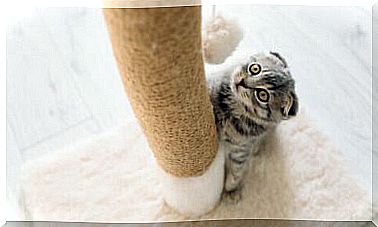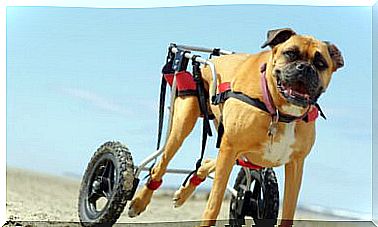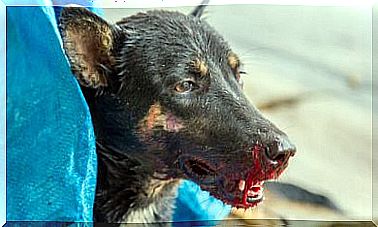Periodontitis In Dogs
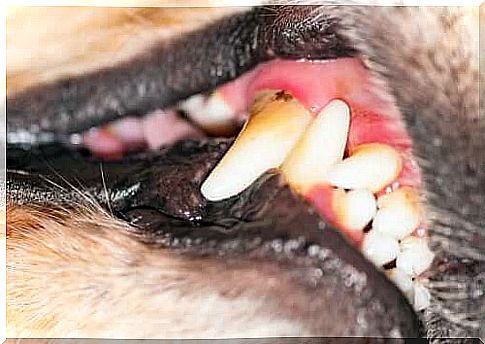
Periodontitis in dogs is the cause of weakening and eventual loss of the structures that support the teeth. This can cause significant damage to the dog’s mouth, as periodontitis can cause worn gums, bad breath, tooth loss, jaw bone loss and chronic pain.
Next, you will understand how this disease sets in and also how to act to treat and alleviate this condition.
What is Periodontitis?
Canine periodontitis is a bacterial infection of the mouth. Four phases of periodontal disease are recognized .
It progresses from the formation of tartar and mildly inflamed gums to established gingivitis (periodontitis, stage II). The disease progresses to mild and eventually severe periodontitis, which may involve bone or tooth loss, with extensive tartar buildup.
What are the signs that deserve attention?
The first thing you can do at home is simply look for signs of dental disease. Turn your pet’s lip and ask the following questions:
- Does your dog have bad breath? This is one of the first signs of periodontal disease.
- Does your dog have red or inflamed gums?
- Are your canine companion’s teeth yellow or brown? Are there any loose or lost teeth?
- How’s your dog’s appetite? Is he still playing hunting? Does he have trouble chewing bones? Did you lose weight?
If you answered ‘yes’ to any of the above questions, your dog may have periodontal disease. But don’t worry, it’s possible to help you.
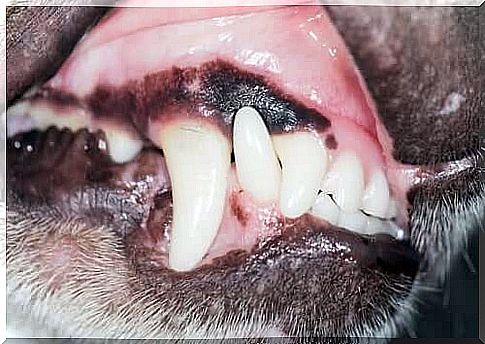
Why is it important not to overlook periodontitis in dogs?
It should be borne in mind that bacterial infection causes wear of gums, teeth and bones, which causes chronic pain. In addition, it also causes loss of teeth and bones.
Periodontitis increases the risk of heart, kidney and liver disease in dogs. All these consequences can be avoided if dental hygiene measures are taken throughout life.
Symptoms are usually noted in older dogs with advanced periodontal disease. Even so, it is known that 9 out of 10 dogs have periodontitis by the age of three. This is a shocking statistic.
Main causes
Periodontitis starts by combining bacteria, food and saliva to form plaque. Plaque covers the teeth and, in two or three days, it combines with the minerals and hardens, thus forming tartar.
The canine immune system tries to fight plaque bacteria. It is this process that causes the gums to become red and inflamed. However, tartar continues to develop and begins to separate the gums from the teeth.
The separation of the gums creates the characteristic pockets, an open space between the teeth and the gums. This is the ideal space for bacteria to multiply.
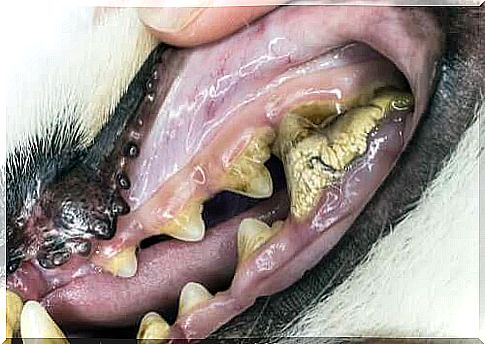
Treatment of periodontitis in dogs
A brief physical examination can detect inflamed gums and tartar buildup. However, a complete oral examination can only be performed under general anesthesia.
If the veterinarian suspects periodontitis, he or she will recommend dental prophylaxis. This procedure will examine your teeth and gums in more detail, as well as provide a thorough cleaning under anesthesia.
So that the animal does not need to be anesthetized more than once, it is recommended to start the treatment or perform extractions at the same time as cleaning is done.
Up to 60% of periodontal disease occurs below the gum line. Dental radiography is a valuable tool for visualizing bone loss and deterioration.
Prevention is the best option
Periodontal disease is irreversible and intervention only seeks to control its progression. Therefore, preventive dental hygiene is the best way to keep your dog’s teeth healthy.
Start brushing your puppy’s teeth while he’s still a puppy and schedule an annual dental cleaning with your veterinarian.
Pet-approved toothpastes are available at most pet stores . Plus, they have flavor, so most dogs learn to tolerate and even enjoy brushing their teeth.
If you offer a good dental care routine at home, as well as regular professional cleanings, you will help prevent periodontitis in your dog.



